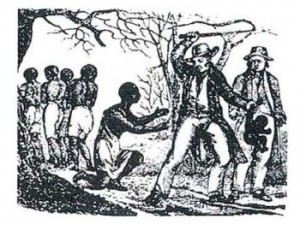 In the Shenandoah Valley, the cavalry forces of Union General George Armstrong Custer, serving under General Philip Sheridan, have been torching “every barn, hill and haystack” that they pass as they travel through the valley. Over-matched, Confederate forces have watched and fumed as their winter stores are destroyed.
In the Shenandoah Valley, the cavalry forces of Union General George Armstrong Custer, serving under General Philip Sheridan, have been torching “every barn, hill and haystack” that they pass as they travel through the valley. Over-matched, Confederate forces have watched and fumed as their winter stores are destroyed.
Today, however, the Rebels attack two of Custer’s regiments, fighting furiously but ultimately in vain as the Federals hold them off. While he is anxious to unleash the full brunt of his forces upon the enemy, a fuming Custer is under orders by his immediate commander to not take the offensive. For three days the Rebels and Custer play a game of cat and mouse, with Custer restrained. Finally, on October 9, Custer is unleashed and, using a brilliant flanking maneuver, deals a decisive blow to the Confederates.
Custer’s victory in the Battle of Tom’s Brook proves to be the victory that propels Union forces into solid control of the Shenandoah Valley, ensuring that Confederate General Robert E. Lee‘s Army of Northern Virginia will face the coming winter with a severe shortage of rations.
Even as the Union is consolidating control over the Shenandoah Valley (while Sherman occupies Atlanta and Lee’s defense of Richmond grows ever weaker), white Baptists of South Carolina receive assurances from their state Baptist newspaper, the Confederate Baptist, that all will ultimately turn out well.
OUR THIRD YEAR–With this number, we enter upon the third year of the Confederate Baptist; and here, we would gratefully erect our Ebenezer, “Hitherto, the Lord has helped us.” We are, also, grateful to our brethren, for the support and sympathy they have given us. This is the time to renew subscriptions: and we trust that those who gave us the hand of cordial greeting, at the beginning, will renew the annual grasp, until the war is over, and our returned veterans can come to their and our help. We wish to keep our colors flying; fully persuaded that the name we bear, now denounced as synonymous with “rebel,” will one day be a badge of honor, even in the United States, whilst all the world will hail a Confederate as a member of an independent and mighty commonwealth.
A future triumphant Confederacy is contingent upon the preservation of the godly institutions of white supremacy and black slavery, as the Confederate Baptist reminds readers. The enslavement of blacks is necessary for the “security” of the white race. The “fanaticism” of abolition is unbiblical and destined to fail. Furthermore, slaves have no interest in freedom, a fact attested to by widely circulated (and mythical) stories of “faithful slaves.”
Our exchanges record frequent instances in which slaves have apprehended Yankee prisoners, escaped from their guards, and have delivered them to the proper authorities. This is the legitimate result of Scriptural teaching; and if our slaves are properly indoctrinated, if the instructions of the New Testament are duly enforced upon their consciences, they will recognize their obligation, and remain loyal and “obedient to their own masters.” The time demands the special care of these dependents; and every effort should be made to give them the instructions of the word of God. Fanaticism endeavors to pervert and mislead them. Let it be the care of Christian masters to give them the Gospel, and thus provide for their welfare, and our own security. The precepts of Christianity are our only sufficient bulwark against the inundation of error, which threaten to overwhelm us.
That many tens of thousands of slaves have already chosen freedom over slavery, and none have renounced freedom to return to slavery, is a story untold in the Confederate Baptist (and also absent from all other Baptist newspapers of the South).
Sources: Jay W. Simson, Custer and the Front Royal Executions of 1864, Jefferson, N.C.: McFarland and Company, 2009, pp. 39-43 (link); Battle of Tom’s Brook (link) and (link); “Our Third Year” and “Faithful Slaves,” Confederate Baptist, October 5, 1864


